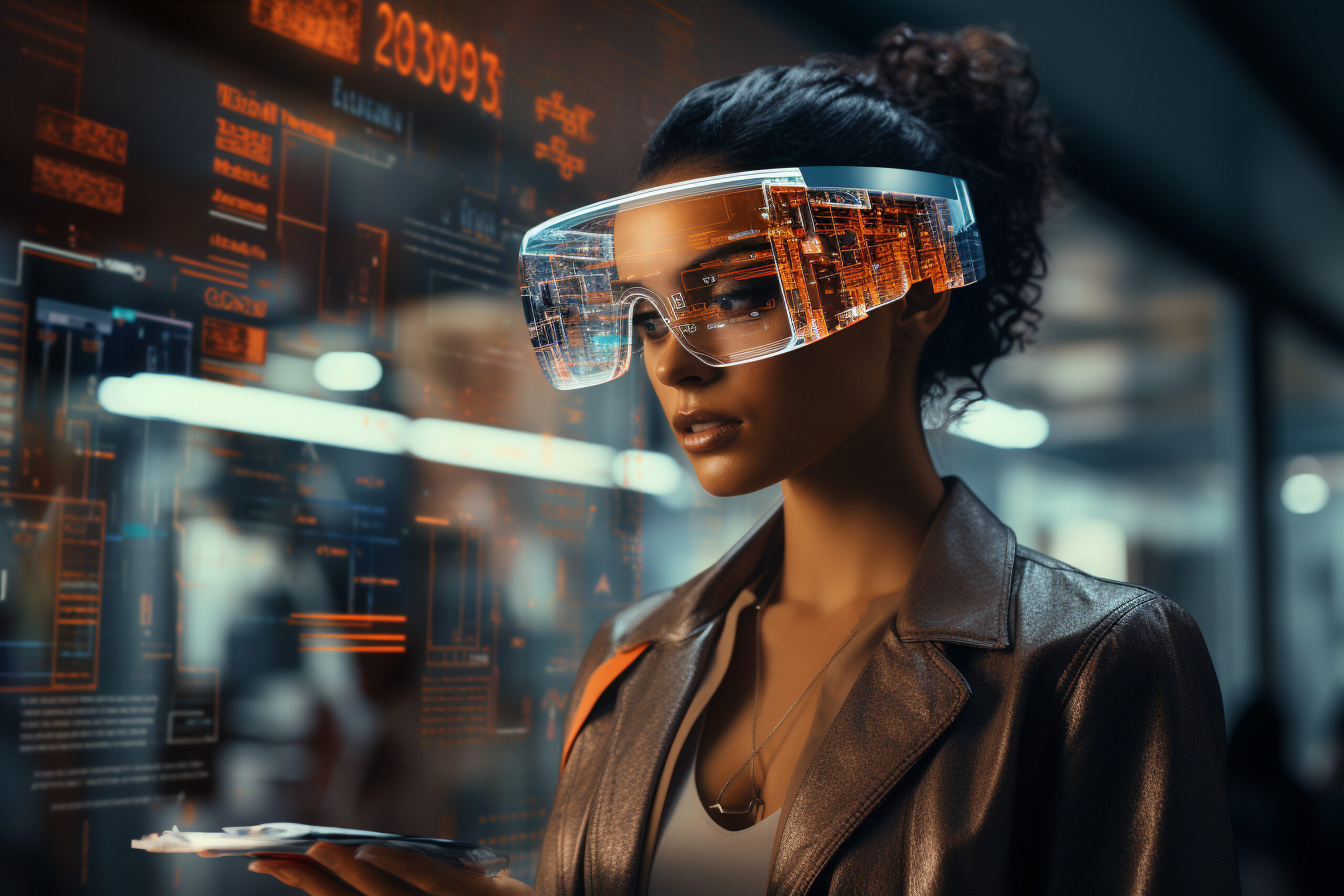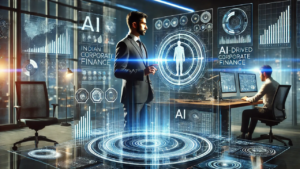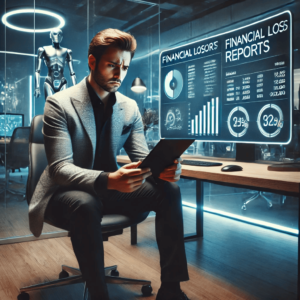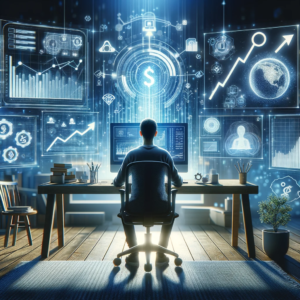Mitigating the Impact of AI Job Displacement
As artificial intelligence (AI) and automation continue to advance at an unprecedented pace, the topic of AI job displacement has become increasingly relevant. The integration of these technologies into various industries is transforming the workforce, leading to both excitement and apprehension. While AI has the potential to boost productivity and efficiency, it also raises concerns about the future of employment. This article explores the strategies for adapting to a changing workforce in the face of AI job displacement, emphasizing the importance of proactive measures to ensure a smooth transition for workers and businesses alike.
We strongly recommend that you check out our guide on how to take advantage of AI in today’s passive income economy.
Table of Contents
The Impact of AI on Employment
The rapid development of AI and automation technologies has already begun to impact the job market. Many industries, such as manufacturing, transportation, and customer service, have seen a significant shift towards automation. As machines become more capable of performing tasks previously done by humans, the risk of AI job displacement becomes more apparent. Studies suggest that millions of jobs across various sectors could be at risk in the coming years, leading to a need for workers to adapt and acquire new skills to remain competitive in the evolving job market.
Industries Most Affected by AI Job Displacement
While AI and automation have the potential to affect virtually every industry, some sectors are more vulnerable to AI job displacement than others. Manufacturing, for example, has long been at the forefront of automation, with robots and machines replacing human workers in repetitive and labor-intensive tasks. The transportation industry is also experiencing a shift, with the development of self-driving vehicles threatening to displace millions of truck, taxi, and delivery drivers. Other industries, such as retail, customer service, and data entry, are also seeing an increased use of AI and automation, leading to concerns about job losses.
The Need for Adaptability and Upskilling
As the workforce evolves in response to AI job displacement, it is crucial for workers to embrace adaptability and commit to continuous learning. The jobs of the future will require a different set of skills than those of the past, emphasizing the importance of upskilling and reskilling. Workers who proactively acquire new skills and knowledge will be better positioned to navigate the changing job market and take advantage of emerging opportunities. This may involve pursuing additional education, attending workshops and training programs, or gaining hands-on experience with new technologies.
Strategies for Mitigating AI Job Displacement
To address the challenges posed by AI job displacement, various strategies can be implemented at both the individual and societal levels. These strategies aim to support workers through the transition, create new job opportunities, and ensure that the benefits of AI and automation are distributed fairly.
Investing in Education and Training
One of the most effective strategies for mitigating AI job displacement is investing in education and training programs. Governments, businesses, and educational institutions must collaborate to develop and fund initiatives that help workers acquire the skills needed for the jobs of the future. This may include expanding access to vocational training, promoting STEM education, and offering subsidies for workers seeking to upskill or reskill. By prioritizing education and training, we can equip workers with the knowledge and abilities necessary to thrive in an AI-driven economy.
Encouraging Collaboration Between Humans and Machines
Rather than viewing AI and automation as a threat to human employment, we should explore ways to encourage collaboration between humans and machines. By leveraging the strengths of both, we can create a more efficient and productive workforce. This collaboration can take many forms, such as using AI to assist workers in complex tasks, automating repetitive and dangerous jobs, and creating new roles that combine human creativity with machine efficiency. By fostering a collaborative approach, we can harness the benefits of AI while minimizing the negative impact of job displacement.
Promoting Entrepreneurship and Innovation
Another strategy for adapting to AI job displacement is promoting entrepreneurship and innovation. As traditional jobs become automated, there will be a growing need for new products, services, and industries to emerge. Governments and businesses can support this process by creating a favorable environment for startups and small businesses, offering funding and resources for innovative projects, and encouraging a culture of entrepreneurship. By fostering innovation, we can create new job opportunities and ensure that the economy remains dynamic and resilient in the face of technological change.
Implementing Policies to Support Workers
To ensure that workers are not left behind in the transition to an AI-driven economy, governments must implement policies that provide support and protection. This may include expanding social safety nets, such as unemployment benefits and job retraining programs, to help workers navigate periods of job loss and transition. Additionally, policies that promote fair labor practices, such as ensuring that workers receive a share of the productivity gains from automation, can help distribute the benefits of AI more equitably. By implementing supportive policies, we can create a more inclusive and sustainable approach to managing AI job displacement.
The Importance of Lifelong Learning
In an era of rapid technological change, the concept of lifelong learning becomes increasingly important. As AI and automation continue to transform the job market, workers must be prepared to adapt and acquire new skills throughout their careers. This requires a shift in mindset, moving away from the idea of education as a one-time event and towards a continuous process of learning and growth. Employers can support this by offering ongoing training and development opportunities, while individuals must take responsibility for their own learning and seek out new knowledge and experiences.
Embracing a Growth Mindset
To thrive in a world of AI job displacement, workers must embrace a growth mindset. This means viewing challenges as opportunities for learning and development, rather than as threats to their job security. By cultivating a love for learning and a willingness to step outside their comfort zone, workers can position themselves to take advantage of new opportunities and adapt to changing circumstances. This mindset is essential for navigating the uncertainties of the future job market and building a resilient and fulfilling career.
The Role of Employers in Supporting Lifelong Learning
Employers have a critical role to play in supporting lifelong learning and helping workers adapt to AI job displacement. By investing in their employees’ development, businesses can build a more skilled and adaptable workforce, while also demonstrating a commitment to their workers’ long-term success. This may involve offering training programs, providing educational benefits, or creating opportunities for employees to rotate through different roles and departments. By fostering a culture of continuous learning, employers can help their workers stay ahead of the curve and contribute to the company’s success in an AI-driven economy.
Conclusion
AI job displacement presents both challenges and opportunities for the workforce of the future. By adopting strategies such as investing in education and training, encouraging collaboration between humans and machines, promoting entrepreneurship and innovation, and implementing supportive policies, we can mitigate the negative impacts of job displacement and create a more resilient and adaptable workforce. Additionally, by embracing lifelong learning and cultivating a growth mindset, workers can position themselves to thrive in an era of rapid technological change. As we navigate the uncertainties of the AI revolution, it is essential that we work together to build a future that benefits everyone, ensuring that the gains from automation are shared fairly and that no one is left behind.
FAQ
How does AI cause job displacement?
AI and automation technologies can perform tasks previously done by human workers, leading to job displacement. As machines become more capable and cost-effective, businesses may choose to automate certain roles, reducing the need for human labor. This can occur across various industries, from manufacturing and transportation to customer service and data entry. AI algorithms can analyze vast amounts of data, make decisions, and complete tasks with high efficiency, potentially rendering some jobs obsolete.
How many jobs are replaced by AI?
The exact number of jobs replaced by AI is difficult to determine, as the impact varies across industries and regions. However, studies suggest that millions of jobs worldwide have already been affected by automation and AI. According to a report by the World Economic Forum, by 2025, the time spent on current tasks at work by humans and machines will be equal. The report estimates that 85 million jobs may be displaced by a shift in the division of labor between humans and machines by 2025.
How many workers will be displaced by AI?
Estimates of worker displacement due to AI vary, but some studies suggest that a significant portion of the global workforce could be affected. A report by McKinsey Global Institute estimates that by 2030, between 400 million and 800 million individuals worldwide could be displaced by automation and need to find new jobs. However, it is important to note that while some jobs may be lost, others will be created, and many jobs will be transformed rather than eliminated.
How many jobs will AI replace by 2030?
The impact of AI on job displacement by 2030 is a topic of ongoing research and debate. Estimates vary depending on the study and methodology used. A report by PwC suggests that by the mid-2030s, up to 30% of jobs could be at risk of automation. However, the report also notes that the net impact on jobs will likely be smaller, as new jobs will be created to complement the changing workforce. It is crucial to remember that these estimates are based on current trends and can change as AI technologies advance and socio-economic factors evolve.
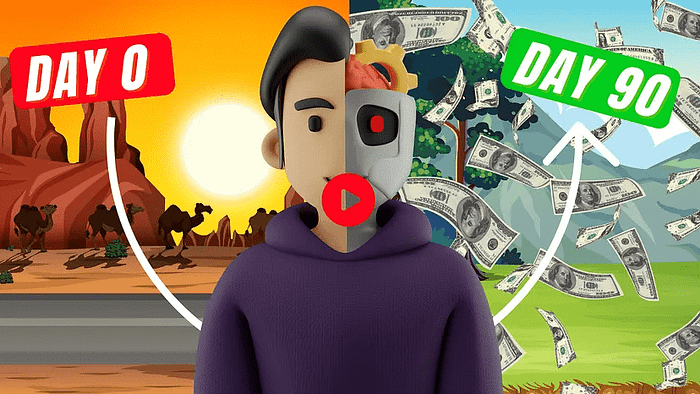
We strongly recommend that you check out our guide on how to take advantage of AI in today’s passive income economy.

